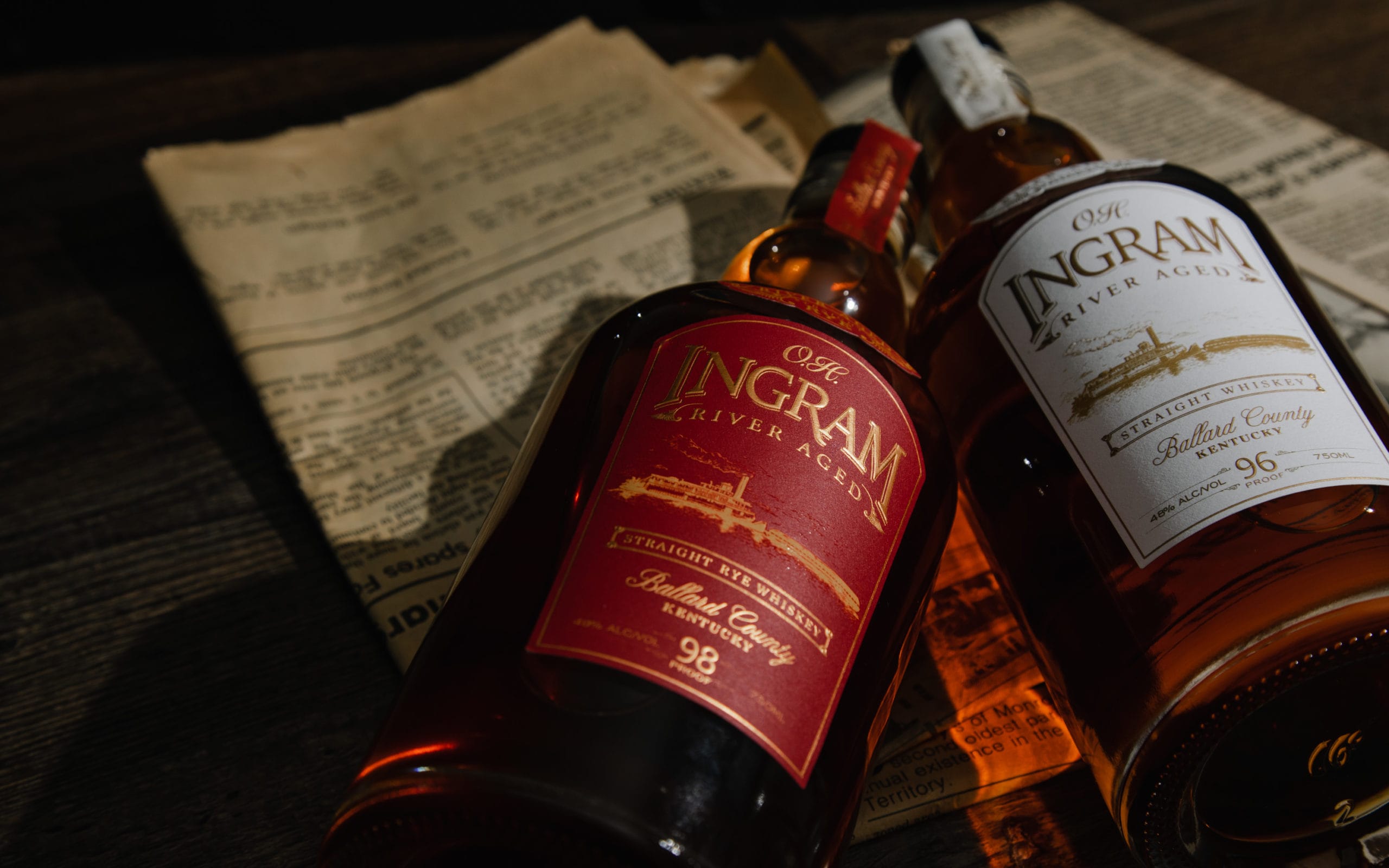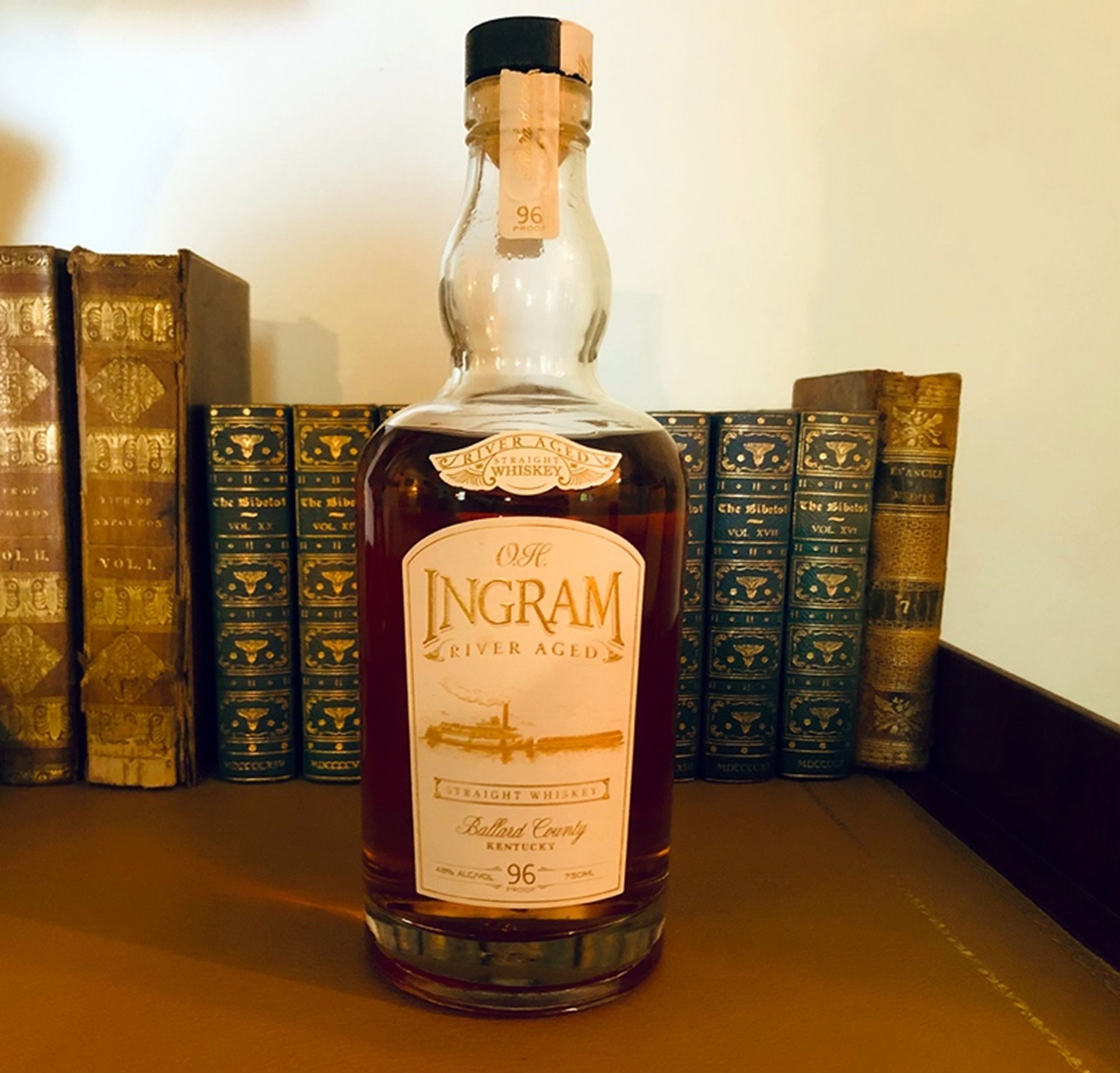
Sloshed on the River: A Taste of O.H. Ingram
Whiskey barrels, when full, are very hard to move. The shape of the things makes you think you can roll them, and you can. But stopping a barrel once it gets moving can be tricky. Overall, it’s a cumbersome business and few distilleries take the trouble to do it — although they won’t admit it. Which is a shame, because rolling a barrel while the white lightning slowly ages inside does a whiskey a world of good.
What separates moonshine from a good whiskey is largely contact between the unfinished spirit and — in the case of bourbon — those charred white oak staves of the whiskey barrel. You probably already knew that, but it does raise the question: What about the spirits in the center of the barrel? The stuff that doesn’t come in contact with the wood? Part of the answer is heat cycling — either naturally with the passing of the seasons or via forced climate control — the liquid expands and contracts creating a (very) slow movement of liquid in the barrel. But it doesn’t move that much. Rolling is better, but tedious.
Enter Hank Ingram, founder of Brown Water Spirits in Ballard County, Kentucky, and the mind behind the O.H. Ingram River Aged Series of whiskeys. Hank is a connoisseur of the brown water but lacks an old whiskey family pedigree. His people were barge people, and that’s what led to one of the more clever — albeit brilliantly simple — innovations in whiskey-making that I’ve read about in a long time.

When we spoke, Hank was on the road to one of the company’s floating rickhouses on the nearby Mississippi River. Hank explained the process to me with the language of an involved and excited engineer, but the bottom line is this: He lets the natural movement of the river do the sloshing for him. (In Hank’s defense, “sloshing” was my word. His had more syllables.)
The effect of all this is a whiskey being aged in the humid climate of the Mississippi, with river legs wobbling beneath it. Hank admits it’s experimental, but that’s the adventure. What appears to be happening is something of dog years in whiskey aging, where one year of the slow but constant movement of spirits in the barrel is equal to about two or three in a rickhouse.
But innovations, however clever, are only as good as their results.
I opened a bottle of O.H. Ingram River Aged. Jamming a nose into the tasting glass with that dark-gold pour, you get some honey. At 96 proof, there was some ethanol as well. It’s nothing a few drops of water and a swirl won’t fix. After that, the heat dissipates, leaving an almost creamy sensation. The honey is still there — but not sweet, because you get some nutmeg spice as well. It’s not terribly malty, but if you have any inclination toward wheated bourbons, you’ll love this. It’s rich and very smooth and has got a nice, long finish.
Ingram is one of those whiskeys that goes well with a little water or a cube of ice, but I wouldn’t be offended with something more — soda or branch water. The spice would lend itself to an excellent Old Fashioned if you don’t like them too sweet.
If you’ve never heard of it, that’s because it only hit the shelves in west Tennessee in March, but you can find it around town fairly readily. It’s nothing we’d call a value brand; it will set you back around $75 dollars. Still, as cheap as I am, at no point was I wondering why I’d spent the money. That’s saying something.
Hank wouldn’t tell me exactly how old it was — and it’s not on the bottle — but I suppose that’s the point. The rules of terra firma don’t really apply here. It tastes like it’s spent all the time it jolly well needs in the barrel, and beyond that, you really shouldn’t care too much.
